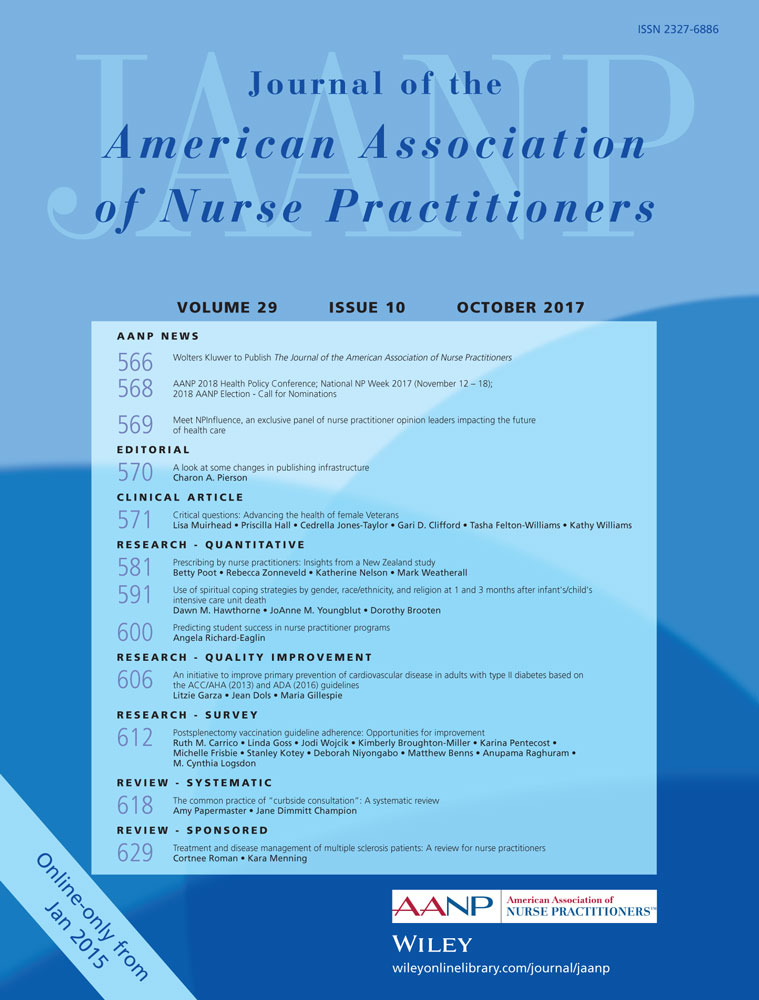An initiative to improve primary prevention of cardiovascular disease in adults with type II diabetes based on the ACC/AHA (2013) and ADA (2016) guidelines
Abstract
Purpose
This project was designed to increase family practice clinicians’ adherence to the American College of Cardiology/American Heart Association (2013) and American Diabetes Association (ADA, 2016) clinical practice guidelines for the prevention of cardiovascular disease (CVD) in 40- to 75-year-old adults with type II diabetes (DMII) through interactive education, an electronic alert, and quality improvement sessions on the treatment and management of cholesterol in a family practice primary care setting.
Data sources
A pre- and postretrospective chart review of 159 charts from a family practice clinic was conducted. Included in the chart review were 40- to 75-year-olds with a diagnosis of DMII.
Conclusions
Three outcomes were analyzed. Assessment of Atherosclerotic Cardiovascular Disease risk score increased from 0% to 76.7% (X2 (1, 159) = 93.46, p < .001), diet and exercise counseling documentation increased from 85% to 100%, and statin therapy application increased from 55.1% to 72.2% (X2 (1, 159) = 11.55, p = .003) in eligible adults 40–75 years-old with DMII.
Implications for practice
This initiative helps to build the body of evidence regarding useful interventions to improve primary prevention of CVD by improving clinician adherence to the clinical care guidelines for 40- to 75-year-old adults with DMII.




